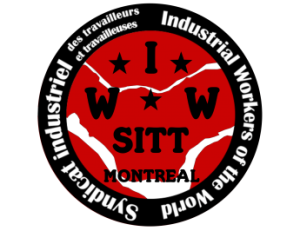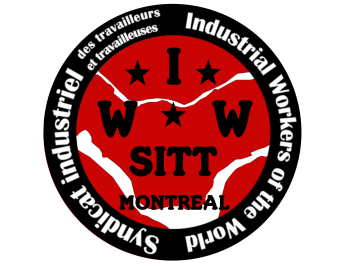The boss of doctor
Medicine has, since antiquity, received these letters of nobility. The doctor or doctor, as a good doctor, must discover and use knowledge, whose sole objective is to cure his or her patient. This profession, in all its grandeur, seems to have only devolved for the good of humanity! Or, in modern times, the doctor is no longer just a healer, it is also a very important source of information about a person. This position therefore becomes very coveted when the information can serve economic issues.. In the case of Workers' Compensation and Illness, the diagnosis of the doctor can cause costs in compensation and prevention in the workplace which can be gigantic. The alternative to these costs for employers is to challenge the diagnoses by mobilizing these own doctors. This practice, widely spread, transforms each occupational health and safety problem into an expert fight.
The expert is never neutral
The doctor is called upon to give a diagnosis that is neutral and impartial about the situation of a patient.. He must, to the best of his knowledge, do justice to his science by describing the patient's condition. Or, despite the presumed good faith of all, the diagnoses can be contradictory between the different experts even if they have received the same training. Medicine, despite these advances, remains an uncertain and contradictory science. Even if some cases are recognized by all, some lesions are still debated. Discussions generally focus on the origin of the symptoms when the evil is untraceable or the faulty factor that caused the harm.. But beyond the debates between schools of thought, these discords would not only be motivated by the theoretical question.
Political economy of occupational health
"The Critique of Political Economy, her too, gives the body a decisive role : capitalist exploitation is not possible without bodily coercion and the critique of wage labor cannot be carried out without examining its deleterious effects on bodies. »- Haber et Renault, 2007.
In the outstanding works of the Marxist current such as the Manuscript of 1844 or The condition of the working classes in England, Marx and Engels demonstrate a direct link between the state of health and capitalism Indeed, in materialist theories, increased capital accumulation always requires a greater source of labor. The capital-labour ratio, in its race for capital maximization, favored the destruction of workers (overexploitation, increased work rate and unsafe working conditions) The working day, always more focused on the constitution of goodwill, leads to greater fatigue and biological wear and tear on the worker. Unsafe working conditions are always favored if it favors increased work. Short, for Marx and Engels, the capitalist brings greater poverty to the working classes and a deterioration of their health.
On the other hand, with the development of industrialization, economic needs changed. The increase in the standard of living had become a crucial component to allow stronger economic growth in the countries in the process of industrialization.. It was then that several public health policies were put in place in constant tension with the desire of individual owners to increase their yield.. Furthermore, increased industrialization resulted in the creation of an ever-growing and militant labor movement that demanded, several times, better occupational health management. In Quebec, health at work has been judicialized and integrated into the State. It is a real process of pacification of conflicts around labor issues that we witnessed. Lawsuits from growing labor organizations were costing entrepreneurs dearly. Now, the State decided to prohibit legal proceedings against the contractors in exchange for compensation offered to all at the expense of employers. From now on, it is a public insurance company (Occupational Health and Safety Commission) who deals with prevention and compensation. Faced with the public system that bills companies for each legion, it would be possible to believe that capitalism would be subject to public dictates. On the contrary, the latter does not find itself powerless in the face of this process. It can challenge all CSST decisions before an administrative tribunal. (Commission for occupational injuries).
“Once again unfortunately, the control of occupational injuries is not my topic today, but let me at least tell you that you can simultaneously control the disbursements of an employment injury by attacking simultaneously at the administrative and medical levels.. »- Jean-François Gilbert, 1992
This quote from a lecture by a lawyer-speaker at the beginning of the decade 1990 bears witness to the all-too-common philosophy among employers on the “management” of occupational injury files. The medical question therefore becomes a key issue for the finances of companies struggling with occupational injuries.. These can be very expensive in terms of profitability. In several cases, it is more profitable for them to contest than to pay medical expenses and income replacement. Companies are therefore mobilizing experts to plead their case before the Commission des lésions professionnelles. This is how the injured or sick worker must prove that his illness is indeed an occupational disease or an accident at work.. Recognition work in the face of authorities and against employers' opinions can become a real way of the cross.
Medicine against the patient
The medical profession therefore becomes twisted by capitalist interests. The physicians of the employer party will try to prove that the attending physician is wrong in his diagnosis. This last, doctor by profession, must become an advocate for his patient's cause. This situation is often exacerbated in non-unionized or highly precarious environments.. She is also very tense when it comes to a chronic illness or a mental illness whose origin is nebulous or plural.. For exemple, one out of two patients claiming compensation from the CSST will be refused the said sums. On the other hand, about 80 % injuried people (work accident) will receive compensation. It is not only at the level of legal authorities that medicine becomes a weapon against workers. Among the therapists, a culture of detecting fraudsters has been established. Physiotherapists and other specialists are being educated on finding fraudsters to improve detection of abuse. This culture thus attempts to place each patient as a potential criminal in the eyes of the CSST..
These strategies are not intended to make the health and safety system efficient., but to externalize a production cost to the worker. In a company, it is the boss who decides on the working conditions and the tasks to be performed. By the fact, he is directly responsible for all workplace hazards that may arise. These dangers are the fruit of any business based on maximizing profit and minimizing losses..
The need to organize a counter-expertise by the labor movement
The system of recognition of occupational injuries is the result of the organization of a movement to fight. for example, in 1975, workers in the asbestos mines of Asbestos went on strike for more than 9 months in order to have a new law recognize the multiple causes of asbestosis and silicosis that were killing people in the region. This strike resulted in the creation of a single law on these types of diseases. This movement could not have been so strong without the support of doctors who supported the struggle of workers by putting their expertise to the benefit of the working world.. The counter-expertise has the educational effect of unmasking the abuses of capitalism and mobilizing the workers around a concrete issue..
Learn more :
Banville, Roch. other people's skin: no to crippling work, poison and kill! / Roch Banville, 1999.
Charbit, Yves. “Capitalism and population: Marx and Engels versus Malthus ». Journal of the History of Human Sciences no. 13, no 2 (1 September 2005): 183-208. doi:10.3917/rhsh.013.0183.
Conflicts, The editorial board of Cultures &. “Biopolitics and the government of populations”. Cultures & Conflicts, no 78 (15 December 2010): 7-10.
Dion, Christian, and Danielle Poulin. The evolution of compensation for victims of asbestosis in Quebec. Laval University, 1986.
Fassin, Didier. “Between the politics of the living and the politics of life: For an anthropology of health ». Anthropology and Societies 24, no 1 (2000): 95.
Foil, Sébastien, and Raymonde Sechet. “Social Geography and the Social Dimension of Health”. In Neck ESO, 2004. http://assos.univ-lemans.fr/LABO/eso/IMG/pdf/fs.pdf.
Lippel, Katherine, Marie Claire Lefebvre, Chantal Schmidt, and Joseph Caron. “Handle the complaint or treat the person”. The effects of the process on the health of victims of occupational injuries. UQAM community service, 2005.
Haber, Stéphane, and Emmanuel Renault. “A Marxist analysis of the bodies? ». Current Marx, no 1 (2007): 14-27.


Leave a Reply
Want to join the discussion?Feel free to contribute!